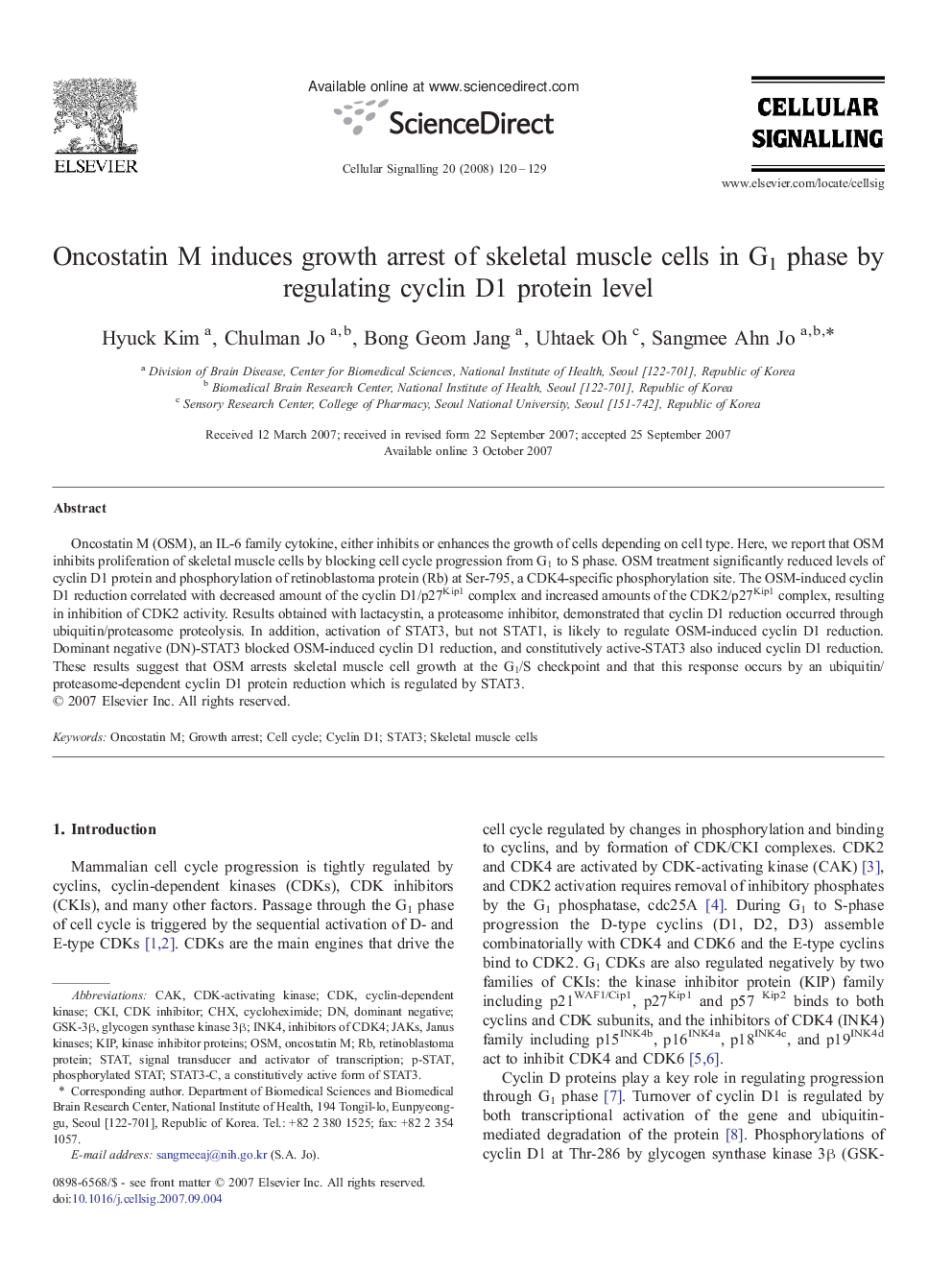| Article ID | Journal | Published Year | Pages | File Type |
|---|---|---|---|---|
| 1964500 | Cellular Signalling | 2008 | 10 Pages |
Oncostatin M (OSM), an IL-6 family cytokine, either inhibits or enhances the growth of cells depending on cell type. Here, we report that OSM inhibits proliferation of skeletal muscle cells by blocking cell cycle progression from G1 to S phase. OSM treatment significantly reduced levels of cyclin D1 protein and phosphorylation of retinoblastoma protein (Rb) at Ser-795, a CDK4-specific phosphorylation site. The OSM-induced cyclin D1 reduction correlated with decreased amount of the cyclin D1/p27Kip1 complex and increased amounts of the CDK2/p27Kip1 complex, resulting in inhibition of CDK2 activity. Results obtained with lactacystin, a proteasome inhibitor, demonstrated that cyclin D1 reduction occurred through ubiquitin/proteasome proteolysis. In addition, activation of STAT3, but not STAT1, is likely to regulate OSM-induced cyclin D1 reduction. Dominant negative (DN)-STAT3 blocked OSM-induced cyclin D1 reduction, and constitutively active-STAT3 also induced cyclin D1 reduction. These results suggest that OSM arrests skeletal muscle cell growth at the G1/S checkpoint and that this response occurs by an ubiquitin/proteasome-dependent cyclin D1 protein reduction which is regulated by STAT3.
